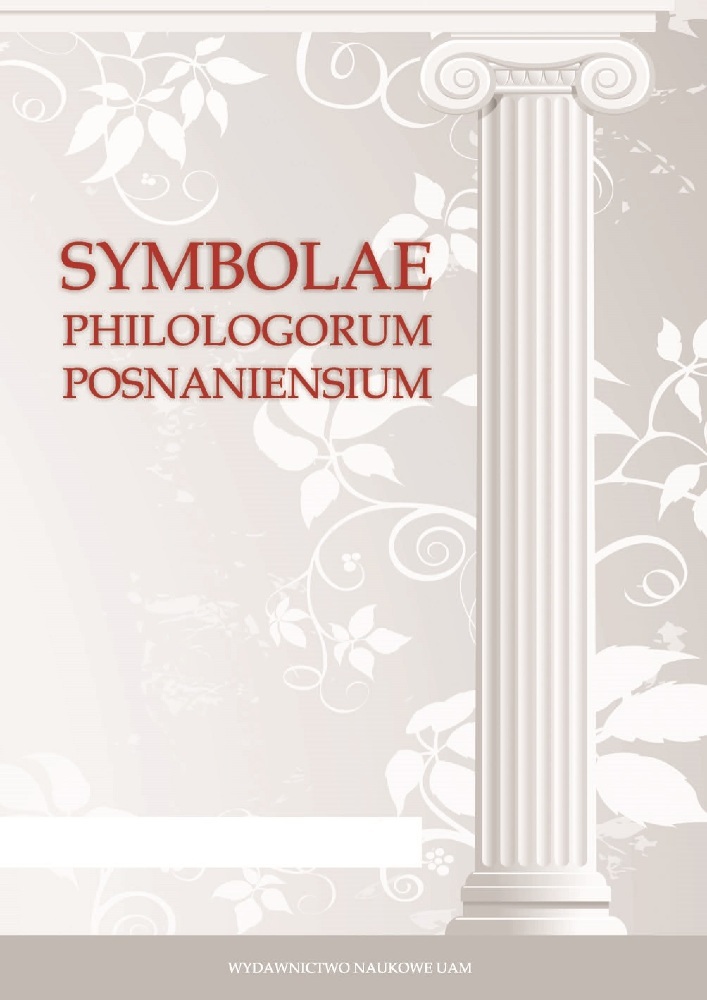Abstrakt
In the present article I discuss the remarkable fact that many of the motifs to be found in Seneca’s tragedies – such as a horrible death, a madman, an obsession or some supernatural agent – are also to be found in abundance in the work of “Gothic” authors such as Ann Radcliffe and Edgar Allan Poe. Indeed, these motifs are now commonly considered to be the hallmark of the Gothic genre. I also analyse some of the techniques which Seneca uses in order to arouse fear and stimulate the reader’s imagination, comparing them with those used by Poe and other Gothic writers.
Bibliografia
I. Critical editions, translations and commentaries:
L. Annaei Senecae Tragoediae, Zwierlein, O. (ed.), Berlin 1986.
The Portable Edgar Allan Poe, van Doren Stern, P. (ed.), New York 1964.
Tarrant 1998: Seneca’s „Thyestes.” Ed. by R. J. Tarrant, (edition with commentary preceded by introduction), Atlanta 1998.
II. Literary criticism:
Von Albrecht 1994: von Albrecht, M. 1997. A History of Roman Literature, vol. II: From Livius Andronicus to Boethius, Leiden.
Botting 1995: Botting, F. 1995. Gothic, London.
Ellis 2001: Ellis, M. 2001. The History of Gothic Fiction, Edinburgh.
Howells 1982 [2004]: Howells, C. A. 2004. The Gothic Way of Death in English Fiction 1790 – 1820 (first publ. in 1982), In F. Botting and D. Townsend (eds.), Gothic. Critical Concepts in
Literary and Cultural Studies, London.
Mantovanelli 1993: Mantovanelli, P. 1993. Il prologo di “Tieste” di Seneca. Strutture spaziotemporali e intertestualità, Palermo.
Mantovanelli 1995: Mantovanelli, P. 1995. “Populus infernae Stygis.” Il motivo dei dannati del mito in Seneca Tragico, Palermo.
Mayer 2002: Mayer, R. 2002. Seneca: “Phaedra”, London.
Pieńkos 2000: Pieńkos, A. 2000. Okropności sztuki. Nowoczesne obrazy rzeczy ostatecznych, Gdańsk.
Segal 1984: Segal, Ch. Senecan Baroque: The Death of Hippolytus in Seneca, Ovid, and Euripides, TAPA 114 (1984), 311–325.
Tietze Larson 1994: Tietze Larson, V. 1994. The Role of Description in Senecan Tragedy, Frankfurt am Main.
Licencja
